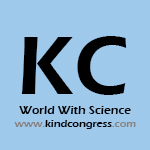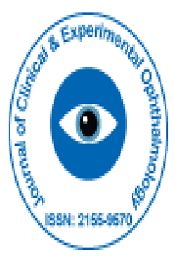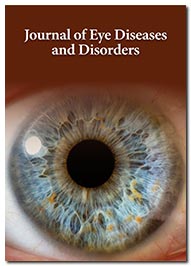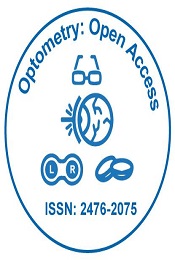Theme: Recent Innovations in Ophthalmology for the Treatment of Eye Disorders
Eye Care 2020
On behalf of the organizing committee, we hope you will join us for “European Conference on Ophthalmology & Eye care” during November 12-13, 2020, which will be an Online Event. which includes prompt keynote presentations, Oral talks, Poster presentations, Workshops and Exhibitions.
Eye Care 2020 augments the chance to interface with and gain from your associates from the nation over and over the globe it had with the discourses on Retina and Retinal Issue, Cornea, Outside Eye Ailment, Neuro-Ophthalmology, Glaucoma: Visual Field Misfortune, Visual Microbiology and Immunology, Novel Ways to deal with Ophthalmology Therapeutics and some more.
Theme: Recent Innovations in Ophthalmology for the Treatment of Eye Disorders
Our aim is to provide the surgeons, refractive surgeons, optometrists, opticians, young researchers, students, industrial delegates and anyone professionally involved in study of Ophthalmology and Eye care and surgery with an opportunity to learn about the complexity of the disease, discuss interventional procedures, look at new and advanced cataract removal practices and their efficiency and efficacy in the treatment of various refractive errors and cataract extraction, and understand local realities and practical constraints in improving vision-care.
Target Audience:
- Clinical researchers & Scientists
- Public Health Professional
- Ophthalmic surgeons
- Retina and Retinal Surgery
- Glaucoma
- Optometrists
- Medical Practitioners, Professors, Deans, Students & Technicians
- Medical & Health care Organizations & Associations
- Researchers & Scholars
- Idiopathic Intracranial Hypertension – Ocular Migraine
- Diagnostic Instruments in Optometry
Track- 1: Ophthalmology
Ophthalmology is that the specialty involved with the medical and surgical care of the eye. Ophthalmologists are experts in medical treatment, surgery and microsurgery for eye conditions and diseases in addition to diagnosing systemic disease that manifest in eye signs or symptoms. Ophthalmology has many sub-specialties.
- Anterior segment surgery
- Vitreo-retinal surgery
- Oculoplastics
- Optic Nerve Hypoplasia
- Saccadic System
- Ocular Therapeutics
Track- 2: Glaucoma
Glaucoma is a multifactorial optic neuropathy that influences more than 50 million populous and is the second driving reason for visual deficiency around the world. Glaucoma is brought on because of the harm of the optic nerve, which prompts to high intraocular weight and on the off chance that it is untreated then it will increments to vision misfortune with the start of imperceptibly blind sides at the edges of visual field took after by visual deficiency. Optic nerve harm is the primary driver for glaucoma alongside the few fundamental causes which are obscure. As indicated by world wellbeing association (WHO) glaucoma is the second real reason for visual deficiency over the globe. The clutters can be generally partitioned into two principle classifications, open-point glaucoma and shut edge glaucoma.
- Open angle Glaucoma
- Angle-closure Glaucoma
- Laser Trabeculoplasty
- Trabeculectomy
- Viscocanolostomy
Track- 3: Retina and Retinal Detachment
The retina is a bit of CNS. Macula masterminded in the purpose of the intermingling of the retina contains a high thickness of photoreceptors which gives sharp and focal vision. The retinal issue may affect the essential tissue macula which may affect the vision which may a part of the time cause authentic visual shortcoming.
- Bulging Eyes
- Cataracts
- CMV Retinitis
- Colour Blindness
- Crossed Eyes (Strabismus)
- Diabetic Macular Edema
- Retinal Detachment
- Colour vision defects
Track- 4: Cornea Disorders and Treatments
Eye is composed of very sensitive and fragile tissues and every part of an eye serves its own function to maintain its normal vision. The cornea is the transparent front part of the eye that covers the iris, pupil, and anterior chamber. The Cornea, with the anterior chamber and lens, refracts light, with the cornea accounting for approximately two-thirds of the eye’s total optical power. But factors such as corneal ulceration, epithelial keratitis & drug-induced epithelial keratitis, corneal regeneration, recurrent corneal erosion and miscellaneous corneal disorders can affect the cornea and ultimately lead to the external eye disease that could end up with permanent blindness. Hence investigation of corneal disease is carryout to mitigate the disease and methods like Contact lenses & vision correction is also use to cure the vision related problems and surgical procedure like corneal transplantation is used to transplant the cornea. The cornea and focal point of the eye are worked to concentrate light on the retina, which is the light-touchy tissue at the back of the eye. At the point when light strikes the cornea, it twists or refracts the light approaching onto the focal point. The focal point refocuses that light onto the retina, which begins the interpretation of light into vision. The retina changes over light into electrical driving forces that go through the optic nerve to the mind, which translates them as pictures.
- Corneal ulceration
- Corneal transplantation
- Corneal neovascularization
- Corneal degeneration
Track- 5: Ocular Oncology
As ocular oncology is a highly specialized field of ophthalmology, there is active international collaboration between ocular oncologists. Ocular oncology is a multidisciplinary service which includes general oncologists, paediatric oncologists, specialist nurses, clinical scientists and many others. The most common malignancies include uveal and conjunctivitis melanoma, uveal metastasis, intraocular and conjunctiva lymphoma and conjunctiva carcinoma. As well as the management of confirmed malignant tumours, ocular oncologists receive a large number of referrals of patients with suspected malignant tumours. Diagnosis is based on bio microscopy, ultrasonography, angiography, optical coherence tomography, auto fluorescence imaging and biopsy. The most common benign tumours include naive, chordal haemangioma, Vasoproliferative tumours and retinal hemangioblastomas. Many of these lesions require treatment and/or long-term surveillance. Eyelid and orbital tumours are more likely to be managed within oculoplastic or orbital specialist services.
- Anisocoria
- Lagophthalmos
- Night blindness
- Uveitis
- Macular degeneration
- Heterochromia iridis
- Hyphema
- Aniridia
Track- 6: Macular Degeneration
Macular degeneration, otherwise called “age-related macular degeneration” (AMD or ARMD), is a medicinal condition which may bring about obscured or no vision in the focal point of the visual field. At an opportune time there are frequently no manifestations. After some time, a few people encounter a progressive compounding of vision that may influence one or the two eyes. While it doesn’t bring about total visual impairment, loss of focal vision can make it difficult to perceive faces, drive, read, or perform different exercises of day by day life. Macular degeneration commonly happens in more seasoned individuals. Hereditary factors and smoking likewise assume a part. It is because of harm to the macula of the retina. Conclusion is by an entire eye exam. The seriousness is separated into right on time, middle, and late sorts. The late sort is also isolated into “dry” and “wet” structures with the go shape making away 90% of cases. Avoidance incorporates working out, eating admirably, and not smoking. Cancer prevention agent vitamins and minerals don’t seem, by all accounts, to be valuable for counteractive action. There is no cure or treatment that profits vision officially lost. In the wet shape, hostile to VEGF drug infused into the eye or less regularly laser coagulation or photodynamic treatment may moderate intensifying. Supplements in the individuals who as of now have the illness may moderate movement.
Track- 7: Pediatric Ophthalmology
Pediatric ophthalmology is a sub-speciality of ophthalmology deals with eye disorders, visual development, and eye care in children .Pediatric ophthalmologists mainly concentrates on visual system and different eye disorders that disturbs the vision in children .Various eye disorders in the children is being examined by the Pediatric ophthalmologists, an expertise in Ophthalmology. By using the glasses and medication, Pediatric ophthalmologists manage the various eye disorders in children with utmost care. Children with head turns, head tilts, squinting of eyes can consult the Pediatric ophthalmologist for treatment. In rare cases some eye disorders in adults like strabismus can be evaluated by Pediatric ophthalmologists.
- Childhood Malignancies
- Congenital Cataract
- Nystagmus
- Strabismus
- Diagnostic & Screening
Track- 8: Neuro Ophthalmology
It is the solidification of neurology and ophthalmology consistently overseeing complex systemic ailments that have signs in the visual structure. Neuro ophthalmology takes a view at the life frameworks, physiology, clinical scrambles or treatment of the afferent visual pathway, higher cortical visual structures, and the vascular tree huge to the retina and optic nerve, understudies, eye advancements and torment. Cerebral Visual Impairment (CVI) joins each and every visual broken brought on by mischief to, or falling flat of, the retrochiasmatic visual pathways without damage to the front visual pathways or any critical visual disease. Myasthenia gravis is made by a breakdown in the consistent correspondence among nerves and muscles which prompts two fold vision, hanging eyelids and unmistakable muscles inadequacy which affecting the both i.e. neuromuscular movement other than vision. Then again nystagmus which is modified eye progression procured in starting or now and again not far-removed that may accomplish reduced or constrained vision. Symptomatic instruments in Neuro ophthalmology are utilized to explore and to treat the unmistakable state of Neuro-ophthalmology as Neonatal visual examination are essentially performed to screen the vicinity and improvement of Retinopathy of Prematurity. Symptomatic gadgets in Neuro-ophthalmology are used to investigate and to treat the distinctive condition of Neuro-ophthalmology as Neonatal visual examination are basically performed to screen the closeness and development of Retinopathy of Prematurity.
Track- 9: Diabetic Retinopathy
Diabetic retinopathy is a diabetes complexity that influences eyes. It’s caused by harm to the veins of the light-touchy tissue at the back of the eye (retina). At initially, diabetic retinopathy may cause no side effects or just gentle vision issues. In the end, it can cause visual deficiency.
- Early diabetic retinopathy
- Advanced diabetic retinopathy
Track- 10: Medicine in Ophthalmology
Medical ophthalmologists are doctors trained in both general (internal) medicine and ophthalmology. They manage medical eye disorders, many of which are related to systemic (i.e. whole body) disease such as diabetes, hypertension, atherosclerosis, inflammation, infection and malignancy. Ocular inflammatory disorders may be the first manifestation of systemic disease and it is important that the whole patient is investigated and treated, not just the presenting organ. Their role is different from ophthalmic surgeons who are specialists in the surgical and medical treatment of diseases and injuries in and around the eye. Medical ophthalmologists treat with conditions such as:
- Inflammatory/infectious disorders affecting vision, eg: uveitis, scleritis, corneal graft rejection, systemic vasculitis, thyroid eye disease
- Neurological disorders affecting vision, eg: multiple sclerosis, brain tumour, stroke, pituitary disorders, thyroid eye disease
- Raised eye pressure, eg: glaucoma
- Retina specific disorders affecting vision, eg: age-related macular degeneration
- Vascular disorders affecting vision, eg: diabetes, diabetic retinopathy
- Genetic disorders affecting vision, eg: retinitis pigmentosa.
Track- 11: Clinical and Surgical Ophthalmology
Clinical Ophthalmology will improve idea into normal visual illnesses, ophthalmic surgical and laser methodology, clinical life structures and visual therapeutics. Patients with eye diseases get examined by Ophthalmologists and Optometrists.
Surgical Ophthalmology is a sub-specialty of Ophthalmology, which includes surgeries like cataract surgery and laser eye surgery. Oculoplastic surgery-incorporates the organization of the eyelids, tear channels and re-gainful surgery, refractive surgery is a process for processing the vision. LASIK is the most performed kind of refractive surgery is (laser-assisted with situ keratomileusis), where cornea is reshaped using a laser. These methods are used to perform surgery commonly known as Optometry. Glaucoma surgery may be a laser or non-laser, is the procedure for achieving main results like decreasing the production of intraocular fluid (aqueous humour) or increasing the drainage of this same fluid.
Track- 12: Ophthalmology Disorders
Many eye sicknesses have no early side effects. They might be effortless, and you may see no adjustment in your vision until the infection has turned out to be very best in class. The absolute most ideal approach to secure your vision is through customary expert eye examinations. Obviously, between examinations, in the event that you see an adjustment in your vision or you think your eye might be harmed in any capacity contact your eye mind proficient promptly.
- Age-Related Macular Degeneration
- Age-related macular degeneration (AMD) is the physical unsettling influence of the focal point of the retina called the macula.
- Swelling Eyes
- Waterfalls in Babies
- Visual impairment
- Diabetic Macular Oedema, DME, is brought on by liquid collection in the macula. Patients with DME ordinarily encounter obscured vision which can be extreme.
- Keratoconus
- Eyelid Twitching
Track- 13: Ophthalmology Research and Novel Approaches
The novel research relates to systems, arrangements, headways and structures to finish the required relentless effect. The novel approach is true blue to Anti IL-6 treatment, pharmaceuticals in doing battling visual need, translational research for periocular basal cell carcinoma and sebaceous cell carcinoma and redesigns in relationship of thyroid eye defilement. Conditions like corneal. The novel research relates to systems, courses of action, headways and structures to fulfil the required unfaltering effect. Conditions like corneal change and transplantation, choroid envisioning, corneal neovascularization can be managed by using novel vision change structures.
Track- 14: Eye Surgery
Ocular surgery is the other name for surgery of eye. It is surgery performed on the eye, normally by an Ophthalmologist. Eye specialist is incharge of selecting the fitting technique for the eye surgery and for avoiding potential risk. The eye is a delicate organ, and requires extraordinary care some times recently, amid, and after a surgical technique .Types of eye surgeries are as per the following
- Laser eye surgery
- Cataract surgery
- Glaucoma surgery
- Canaloplasty
- Refractive surgery
- Corneal surgery
- Vitreo-retinal surgery
- Eye muscle surgery
- Oculoplastic surgery
- Eyelid surgery
- Orbital surgery
Track- 15: Optometry and Vision Science
Optometry is a social insurance calling worried with the soundness of the eyes and related structures, and vision, visual frameworks, and vision data arranging in people. Fundamentally vision Science concentrates on visual neuroscience, atomic and cell science, cell layer common science, put forth a concentrated effort administration, contact focal concentrations, visual diseases, refractive progress, corneal surface mapping, new born child vision computational vision, and 3D PC showing.
Track- 16: Ophthalmology Practice
It is a routine of an ophthalmologists, experts and analyst to deal with the distinctive eye restorative issues with a hope to treat the sickness. An up and coming ophthalmologist should recollect that an ophthalmic practice incorporates the treatment of patients with vision-handicap sicknesses.
Track- 17: Cataract and Refractive Surgery
A refractive error, for example, partial blindness (near sightedness), farsightedness (hyperopia), astigmatism or presbyopia, refractive surgery is a strategy for revising or enhancing vision. There are different surgical methods for modifying eye’s centering capacity by reshaping the cornea, or clear, round vault at the front of your eye. Different techniques include embedding a focal point inside the eye. The most generally performed kind of refractive surgery is LASIK (laser-aided situ keratomileusis), where a laser is utilized to reshape the cornea. For individuals who are myopic, certain refractive surgery systems will diminish the bend of a cornea that is excessively steep so that the eye’s centering power is reduced. Pictures that are engaged before the retina, because of a more drawn out eye or soak corneal bend, are driven nearer to or specifically onto the retina following surgery. Pictures that are locked in past the retina, due to a short eye or level cornea, will be pulled closer to or particularly onto the retina after surgery.
- Understanding the Unhappy Patient after Premium Cataract Surgery
- New Developments in Femtosecond Cataract Surgery
- PRK (photorefractive keratectomy), AK or RLI (astigmatic keratotomy) and RK (radial keratotomy)
- CK (conductive keratoplasty)
- EpiLasik
- LASEK (laser epithelial keratomileusis)
- Phakic Intraocular Lenses
- Intraocular Lenses
- Cryoextraction
- Intracapsular cataract extraction (ICCE)
Track- 18: Keratoprosthesis
Keratoprosthesis is a surgical strategy where a sick cornea is supplanted with a simulated cornea. Customarily, Keratoprosthesis is prescribed after a man has had a disappointment of at least one benefactor corneal transplants. All the more as of late, a less obtrusive, non-entering counterfeit cornea has been produced which can be utilized as a part of more normal instances of corneal visual deficiency. While customary cornea transplant utilizes benefactor tissue for transplant, a counterfeit cornea is utilized as a part of the Keratoprosthesis methodology. The surgery is performed to re-establish vision in patients experiencing extremely harmed cornea because of intrinsic birth abandons, diseases, wounds and consumes. Keratoprosthesis are made of clear plastic with incredible tissue resistance and optical properties. They shift in configuration, measure and even the implantation systems may vary crosswise over various treatment focuses. The strategy is finished by ophthalmologists, frequently on an outpatient premise.
Track- 19: Eye: Developmental Biology
Eye development is initiated by the master control gene Pax-6, a home box gene with known homologues in humans, mice (small eye), and Drosophila (eyeless The Pax-6 sequence locus could be a transcription issue for the assorted genes and growth factors concerned in eye formation. Eye morphogenesis begins with the examination, or outgrowth, of the optic grooves or sulci. During the invagination of the optic cup, the ectoderm begins to thicken and form the lens placed, which eventually separates from the ectoderm to form the lens vesicle at the open end of the optic cup. Further differentiation and mechanical rearrangement of cells in and around the optic cup gives rise to the totally developed eye.
Track- 20: Artificial Intelligence in Eye-Care
Artificial intelligence (AI) is winding up increasingly basic for screening, diagnosing and helping treat eye conditions. The innovation as of now is utilized in online web indexes, discourse acknowledgment instruments and other shrewd gadgets. Now, AI is showing promise in healthcare.
The worldwide vision care market is driven by the expanding number of sellers working together with human services suppliers to elevate and urge clients to utilize the most recent eye care items. The exponential development in North America and the APAC area is probably going to drive the interest for eye care items in the market. New age eye care items include creative material. These days, rather than utilizing customary plastic material, the new-age contact focal points are comprised of top-notch material, for example, silicone hydrogel, which offers better oxygen breathability. These kinds of headways are driving toward expanded interest for eyeglasses and contact focal points internationally.
Importance & Scope:
Industry research and market reports address research used to treat patients and give helpful consideration. Data is given to teach and empower a shrewd business choice on pharma organizations associated with treating eye issue and maladies. Audit data that enables you to remain side by side of treatment markets and research headings. Recognize the forthcoming course of research in the worldwide commercial center for pharma makers engaged with an eye issue. Make a chance to settle on an educated choice about the course regarding this basic human services theme.
The ophthalmology market is a figure to create at a compound yearly advancement rate (CAGR) of 6.7% till 2023 with the prevailing piece of this improvement foreseen that would occur in the keep going four extensive stretches of the check time period. Of the five key signs inside the treatment region-glaucoma, AMD, DME, DR and DES-glaucoma and AMD have the most powerful thing pipelines. The overall system promotes gauge is to accomplish USD 18.9 billion by 2025, according to the examination by Grand View Research Inc., progressing at a CAGR of 10.5% during the figure time frame. Expanding the number of medical procedures over the world is giving a critical lift to the market.
Top Global Universities:
- Bascom Palmer Eye Institute/University of Miami, USA
- University of Manchester, UK
- Wilmer Eye Institute/Johns Hopkins University of Maryland, USA
- University of Plymouth in, UK
- Czech Technical University of Prague, Czechia
- Masaryk University of Brno, Czechia
- Institute des Sciences de la Vision, France
- Sofia University St. Kliment Ohridski, Bulgaria
- Bangor University in Wales, UK
- University of Teknologi MARA, Malaysia
- The Hong Kong Polytechnic University, China
- Bharatimaiya College of Optometry, India
- National University of Singapore, Singapore
- University of Tokyo, Japan
- Tsinghua University, China
- Glasgow Caledonian University in Scotland
- Sackler Faculty of Medicine tel aviv University in Israel
- Bena Ophthalmology University, San Antonio
- City University College of Ajman, UAE
- University of Glasgow, Ireland
- Dublin Institute of Technology, Ireland
- University of Florence, Italy
- Iran University of Medical Sciences, Iran
- Hadassah College, Israel
Major Association Center Globally:
- American Academy of Ophthalmology in California, USA
- American Glaucoma Society in California, USA
- American Society of Retina Specialists in Chicago, USA
- International Society for Genetic Eye Diseases and Retinoblastoma in San Francisco, USA
- European Society of Cataract and Refractive Surgeons, USA
- European Association for Vision and Eye Research, Belgium
- European Board of Ophthalmology, UK
- European Contact Lens Society of Ophthalmologists, France
- International Society of Ocular Trauma, France
- European Ophthalmic Pathology Society, UK
- European Society of Cornea & Ocular Surface Disease Specialists, Ireland
- European Society of Ophthalmic Plastic and Reconstructive Surgery, Germany
- Asia Pacific Academy of Ophthalmology, Singapore
- Asia Pacific Association of Cataract Refractive Surgeons, Singapore
- Asia Pacific Glaucoma Society, Malaysia
- Asia Pacific Society of Ophthalmic Plastic and Reconstructive Surgery, China
- Asia Pacific Strabismus and Pediatric Ophthalmology Society, China
- Asia Pacific Vitreoretina Society in Shanghai, China
- Asia Pediatric Ophthalmologists Association, China
- Basir Eye Research Center, Iran
- Farabi Eye Hospital, Iran
- Research Institute of Ophthalmology, Iraq
- Laser Eye Care and Research Center, Dhabi
- Jordan German Eye Center in Amman, Jordan
- Kuwait Specialized Eye Center, Kuwait
- Al Rowad Eyes Hospital, Iraq
Conference Highlights
- Ophthalmology
- Glaucoma
- Retina and Retinal Detachment
- Cornea Disorders and Treatments
- Ocular Oncology
- Macular Degeneration
- Pediatric Ophthalmology
- Neuro Ophthalmology
- Diabetic Retinopathy
- Medicine in Ophthalmology
- Clinical and Surgical Ophthalmology
- Ophthalmology Disorders
- Ophthalmology Research and Novel Approaches
- Eye Surgery
- Optometry and Vision Science
- Ophthalmology Practice
- Cataract and Refractive Surgery
- Keratoprosthesis
- Eye: Developmental Biology
- Artificial Intelligence in Eye-Care
To share your views and research, please click here to register for the Conference.
To Collaborate Scientific Professionals around the World
| Conference Date | November 12-13, 2020 | ||
| Sponsors & Exhibitors |
|
||
| Speaker Opportunity Closed | |||
| Poster Opportunity Closed | Click Here to View | ||
Useful Links
Special Issues
All accepted abstracts will be published in respective Our International Journals.
- International Journal of Ophthalmic Pathology
- Clinical & Experimental Ophthalmology
- Journal of Eye & Cataract Surgery
Abstracts will be provided with Digital Object Identifier by












